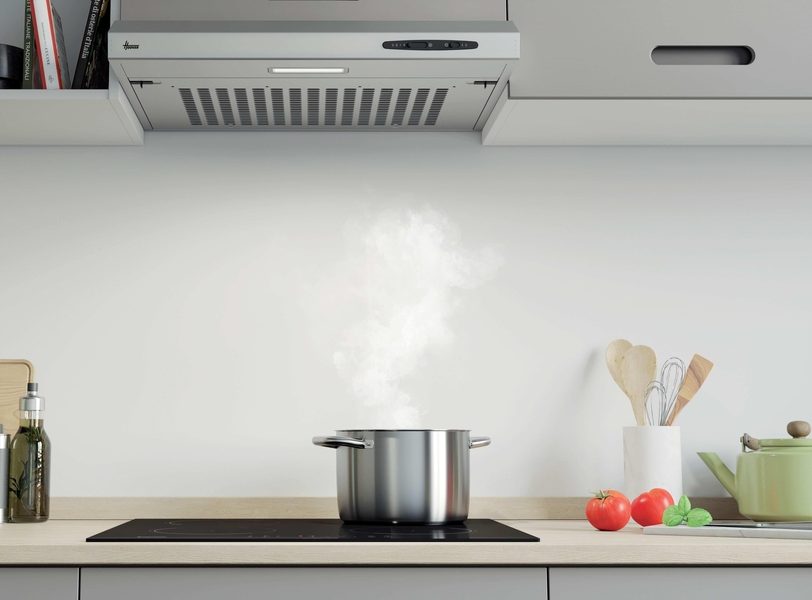We often don’t notice it, but the level of humidity in our home affects our health, comfort, and even energy consumption more than we think. Humidity isn’t always visible, but it can be felt: heavy air, foggy windows, and a sense of cold even when the heating is on.
Managing it properly doesn’t just mean avoiding mold and bad odors—it means creating a healthier, more welcoming, and comfortable environment.
Main causes of domestic humidity
Humidity can have several origins, and knowing them is the first step to solving the problem effectively.
- Condensation: the most common cause. It forms when warm air comes into contact with cold surfaces, such as windows or uninsulated walls. Cooking or showering without ventilating produces steam, which, when cooled, turns into droplets on colder surfaces like windows.
- Bad daily habits: drying clothes indoors, not airing the house after the night, or generally keeping windows always closed are all actions that can increase humidity.
- Leaks or capillary rise: often linked to structural defects or non-waterproof materials. They can originate from cracks in external walls, damaged terrace membranes, or lack of moisture barriers in foundations, allowing water to slowly rise along walls.
- Poor ventilation: if air doesn’t circulate, especially inside wardrobes or furniture, humidity accumulates, particularly in bathrooms and kitchens.
What are the effects?
Humidity affects many aspects of daily life, often silently.
- On health: overly humid environments promote the growth of mold, dust mites, and bacteria, which can worsen allergies and respiratory issues.
- On sleep: sleeping in a room with excessive humidity can compromise rest quality. The body struggles to regulate its temperature, leading to shallower sleep.
- On the home: mold forms on walls, paints deteriorate, and furniture absorbs moisture, potentially deforming.
- On energy consumption: the higher the humidity, the colder it feels, so heating is increased, raising your energy bills!

Measuring humidity
To prevent the silent effects of humidity, you must know how to manage it, and first, how to measure it. Humidity can be measured with a digital or analog hygrometer, which shows relative humidity.
A simple home method is the ice cube test: place some cubes in a glass and leave it in the room, away from heat sources. If condensation forms on the glass after 5 minutes, your room’s humidity is high; if not, you can relax.
Every environment has its ideal humidity
The ideal humidity range is 40–60%, but each space has its needs depending on use and natural ventilation.Living areas like the living room and kitchen should stay around 40–55%. In the kitchen, cooking vapor raises humidity, so use the extractor hood or briefly open windows after cooking.
💡Smart tip: a connected hood with Preci Sync by hOn can automatically synchronize with the stove and set the ideal extraction level.
Bedrooms need a balance: 45–55% promotes quality sleep, prevents dust mites, and keeps airways clear.
Bathrooms and laundry rooms can tolerate slightly higher values, 50–60%, provided there’s good ventilation or an active extractor after showers or drying clothes.
Practical and natural solutions
Managing humidity doesn’t mean filling your home with machines—small habits and natural touches often suffice.
- Ventilate regularly: open windows for 10 minutes a day, preferably in the morning or after a shower.
- Add humidity-absorbing plants: some species help keep the air drier and cleaner, such as peace lily, Boston fern, bamboo palm, and ivy.
- Prefer a dryer: drying clothes indoors raises humidity; the dryer is the perfect ally for laundry and home care.
- Use breathable materials: mineral or lime-based paints allow walls to “breathe.”
- Smart dehumidifiers and air conditioners: many models activate automatically when humidity exceeds a certain threshold, ensuring a balanced microclimate.
A smart home is your comfort ally
Connected appliances via the hOn app are essential for humidity management.
For example, many compatible stoves and hoods can sync with the hOn Sync function, allowing the hood to automatically adjust speed based on the vapor produced.
Similarly, smart dryers, purifiers, and air conditioners connected to hOn can be monitored and programmed via the app: you can receive notifications about humidity levels, start dehumidification or drying cycles intelligently. Additionally, the AI DRY function detects when clothes are dry before the program ends, preventing errors. Convenience and comfort in one function!
Your home stays dry and healthy, caring for itself intelligently while reducing energy waste and improving daily well-being.





